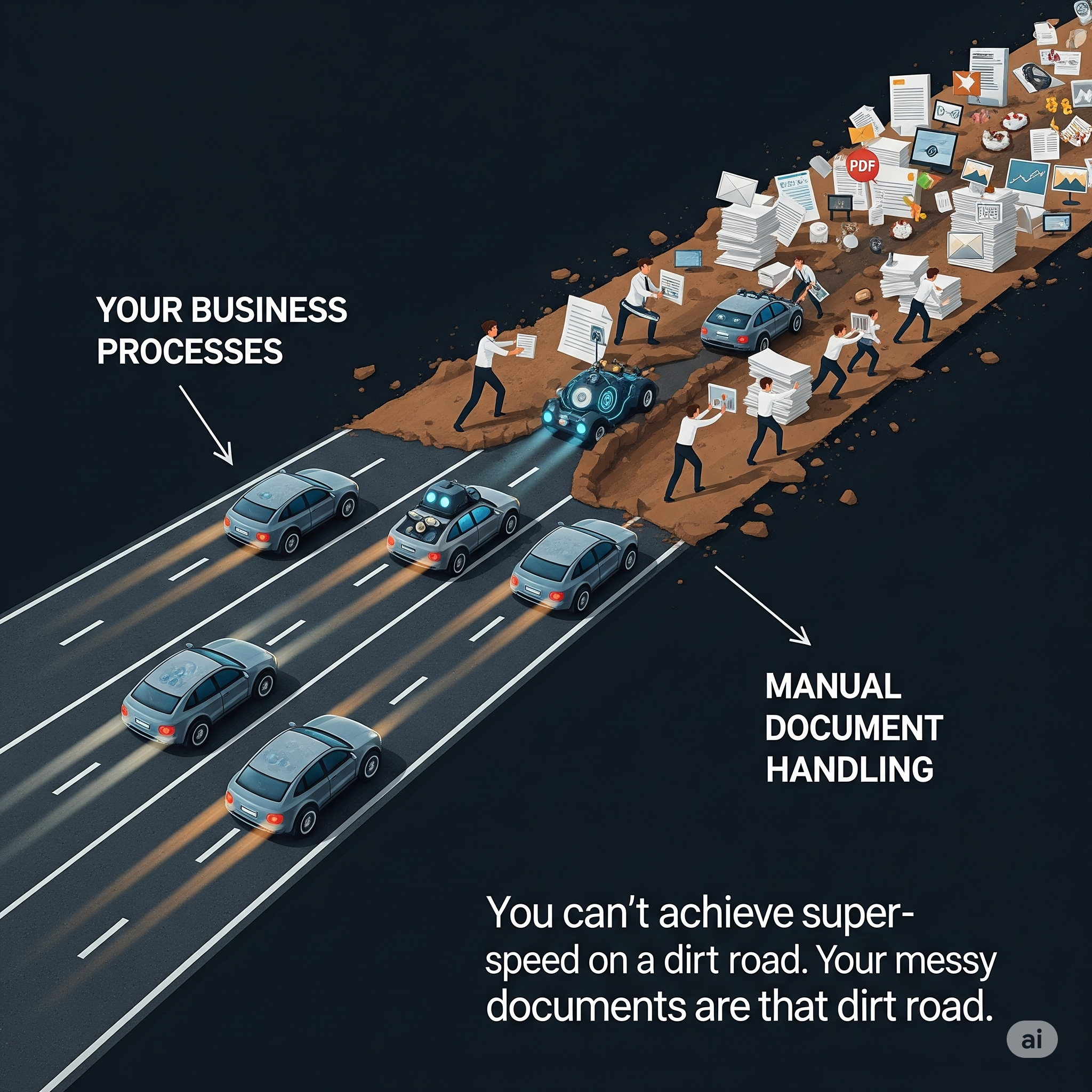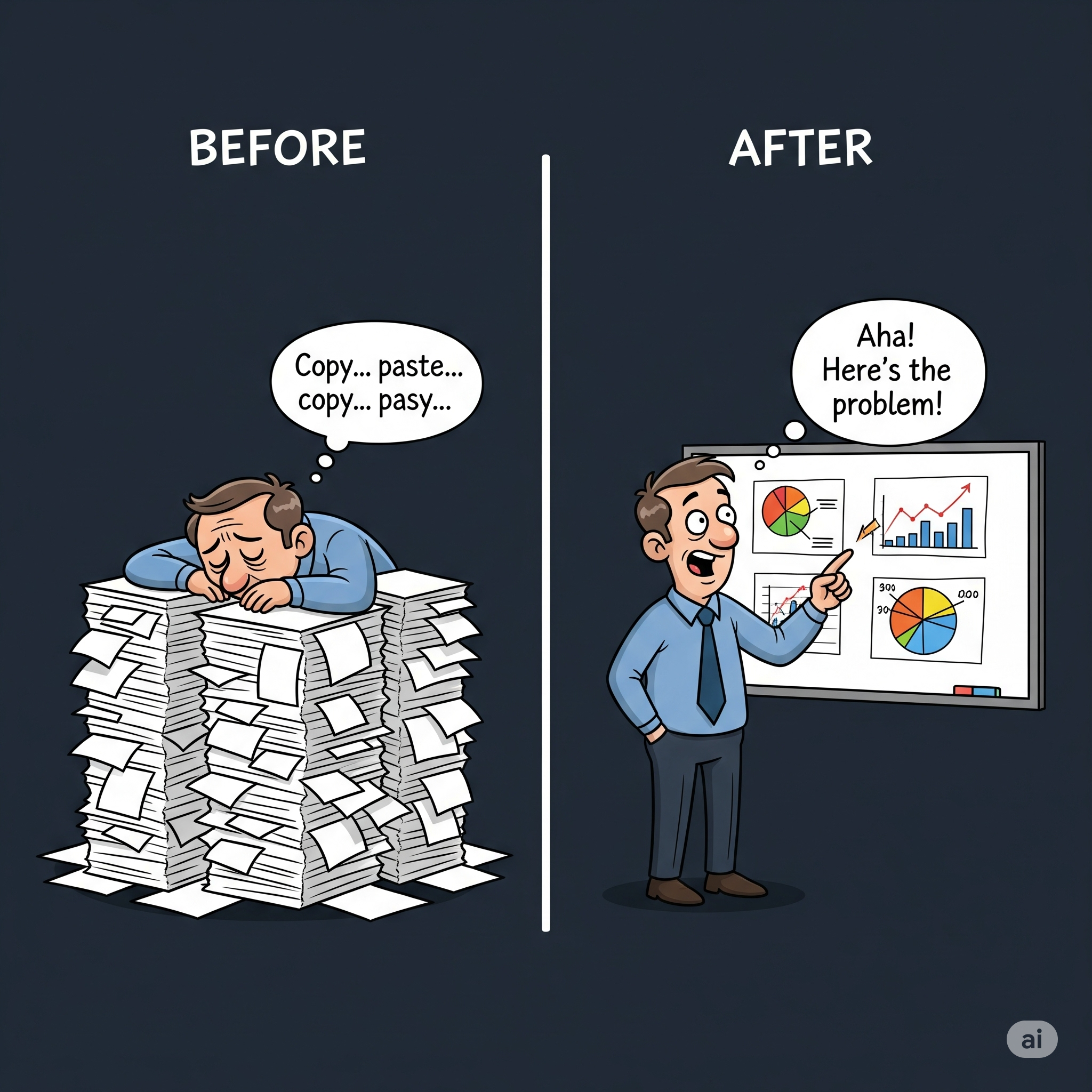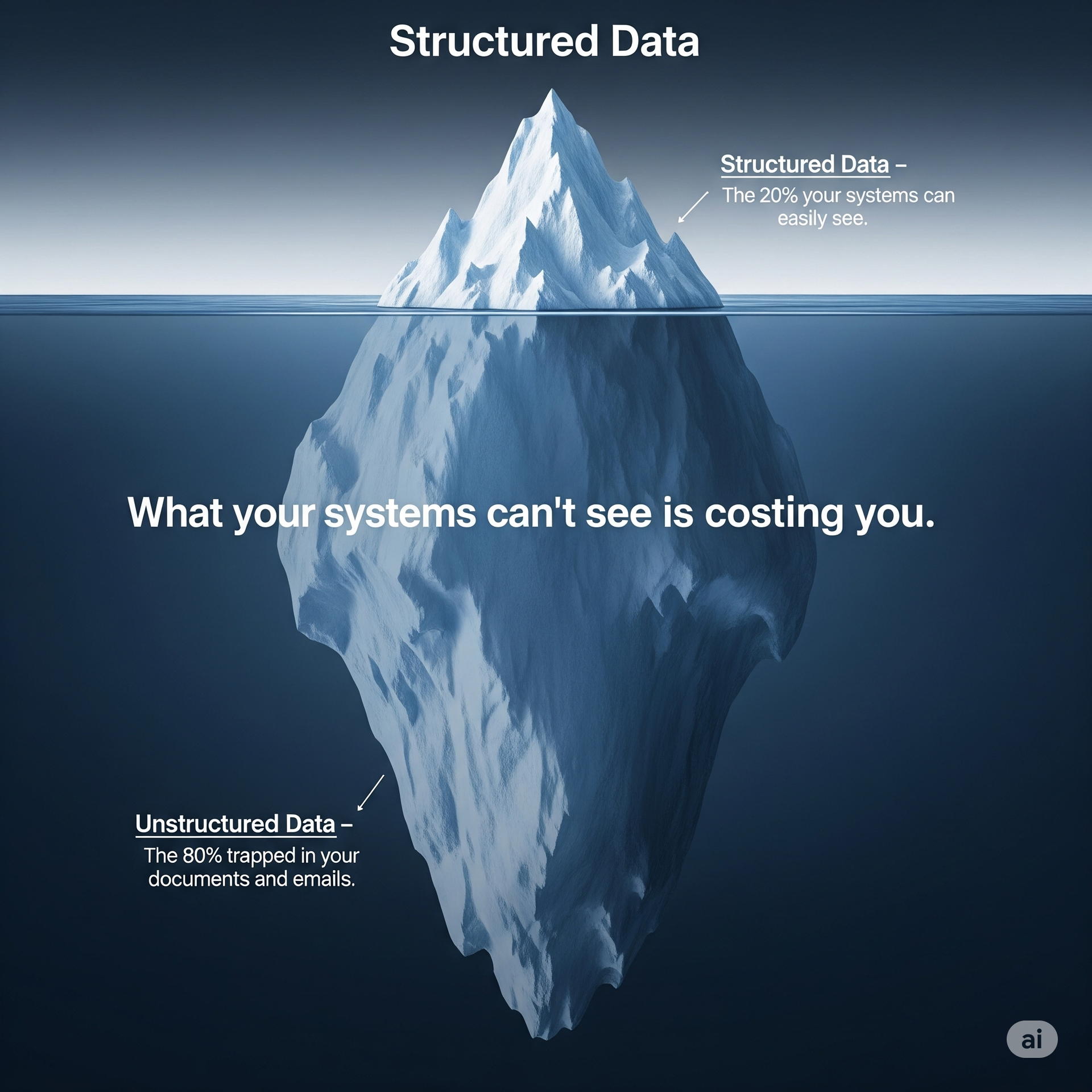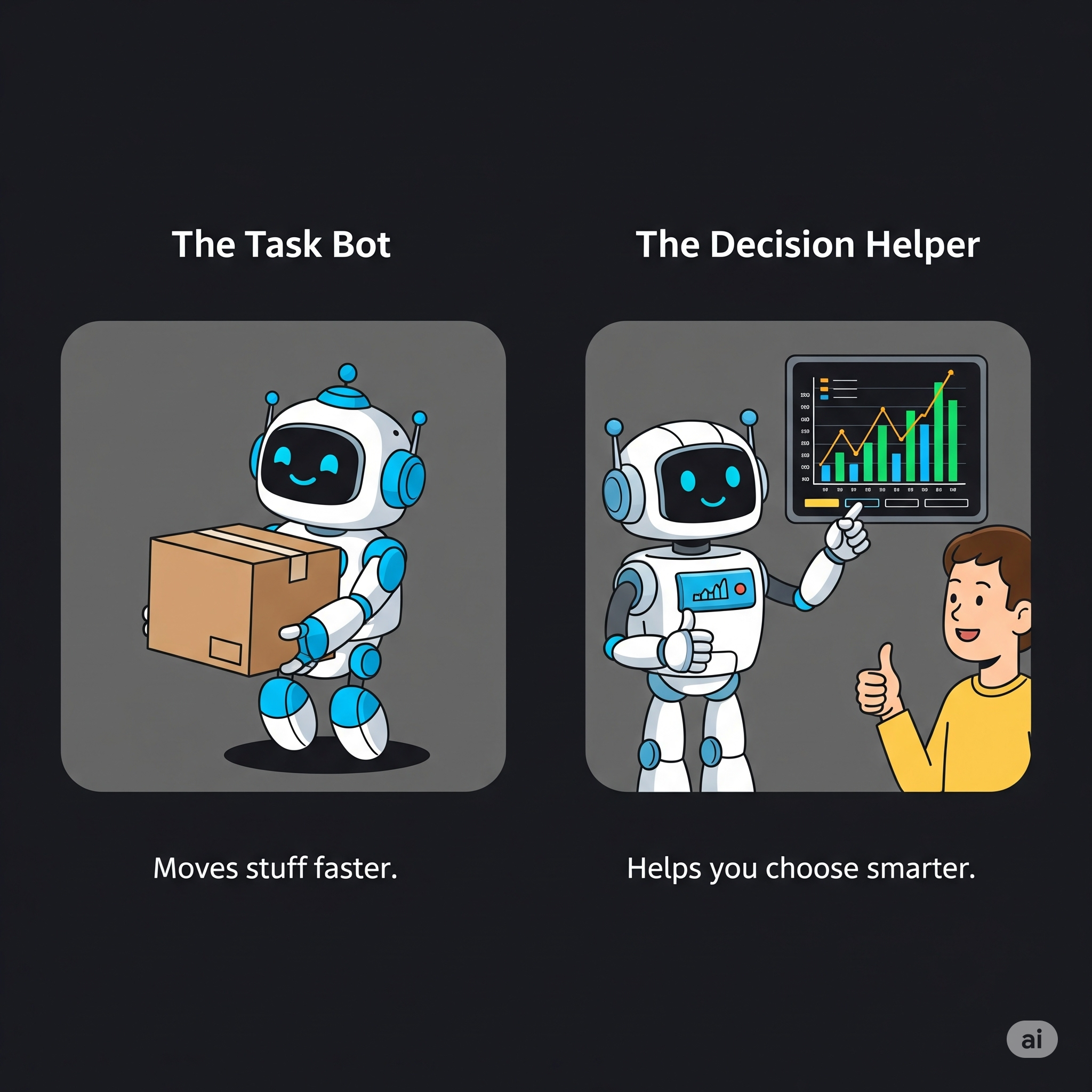We all got excited about automation a few years back, didn’t we? The promise was huge: let software bots handle the repetitive, boring work so our teams could focus on what really matters. And for the simple stuff, it was great. We automated the predictable, copy-and-paste tasks and gave ourselves a pat on the back.
But for many, that’s where the progress stalled.
We’ve hit a wall. We’re left with the messy, complicated, and unpredictable work that makes up the bulk of what our businesses actually do. Our ambitious automation programs are sputtering out, our “to-do” piles are bigger than ever, and our people are still stuck doing mind-numbing manual work. What went wrong?
The problem is simple: we bought a train when we needed an all-terrain vehicle.
Old-school automation is like a train on a perfectly straight track. As long as the track is clear and nothing changes, it moves at incredible speed. But the real world isn’t a straight track. It’s a messy landscape with hills, potholes, and detours. The second our old automation train encounters an unexpected obstacle, it grinds to a halt.
Why the Old Way Breaks Down
The old way of automating things relies on a strict set of “if-this-then-that” rules. Software bots are told to look for specific information in specific places. And when things are perfect, it works.
But when is business ever perfect? The real world is full of variety, and that’s what breaks these brittle bots.
Think about invoices. You work with hundreds of different suppliers. Vendor A puts the invoice number in the top right. Vendor B puts it in the middle and calls it a “Reference #”. Vendor C sends a scanned copy that’s slightly crooked.
The rule-based bot, told to look only in the top right for an “Invoice Number,” takes one look at Vendor B and C’s invoices and has a meltdown. It can’t find what it’s looking for, so it dumps the invoice into a queue for a human to fix.
Multiply that problem across contracts, customer emails, and shipping forms, and you can see why things fall apart. Your team ends up spending all their time managing the bot’s exceptions, and you have to keep paying developers to write new rules for every tiny variation. It’s exhausting and expensive.

There’s a Smarter Way: Teaching vs. Telling
So, what’s the answer? It’s not about writing more and more rules. It’s about switching from telling the software what to do, to teaching it how to think.
This new, smarter approach is about letting the software learn from examples, just like a person does. You don’t give a new hire a 1,000-page manual with a rule for every possible scenario. You show them 20 different invoices and say, “This is the invoice number, this is the date, this is the total amount.” They learn the patterns.
That’s what smart automation does. It looks at hundreds of examples and learns what an invoice number looks like, no matter where it is on the page. It learns to handle the messy, unpredictable world because it’s been taught how to recognize patterns, not just follow a rigid map.

What This Actually Looks Like
Let’s stick with invoices. In a big company, the “before” picture is a team of people spending all day just keying in data from one screen to another. The process takes days, payments are often late, and mistakes are common.
The “after” picture? An invoice arrives in an email. A smart system instantly reads it, understands it, and checks it against a purchase order. If everything matches, it’s approved for payment in minutes. No human ever has to see it.
And what about the ones that don’t match? The system sends them to a person, but it doesn’t just dump the problem. It highlights the issue: “Hey, the price on this invoice is different from the price on the purchase order. Can you check it out?”
This frees up your team from the boring 95% of the work so they can use their brainpower on the tricky 5% that actually requires human intelligence.
How to Get Started Without Boiling the Ocean
This might sound big and complicated, but it doesn’t have to be. The best way to start is to, well, start small.
Forget about trying to transform the entire company at once. Find one process that is causing a lot of pain—something high-volume and full of manual work, like processing invoices or onboarding new customers.
Focus on fixing that one thing first. Prove that this smarter way of working actually works. Once you’ve turned a process that took days into one that takes minutes, you’ll have no trouble convincing people to tackle the next one.
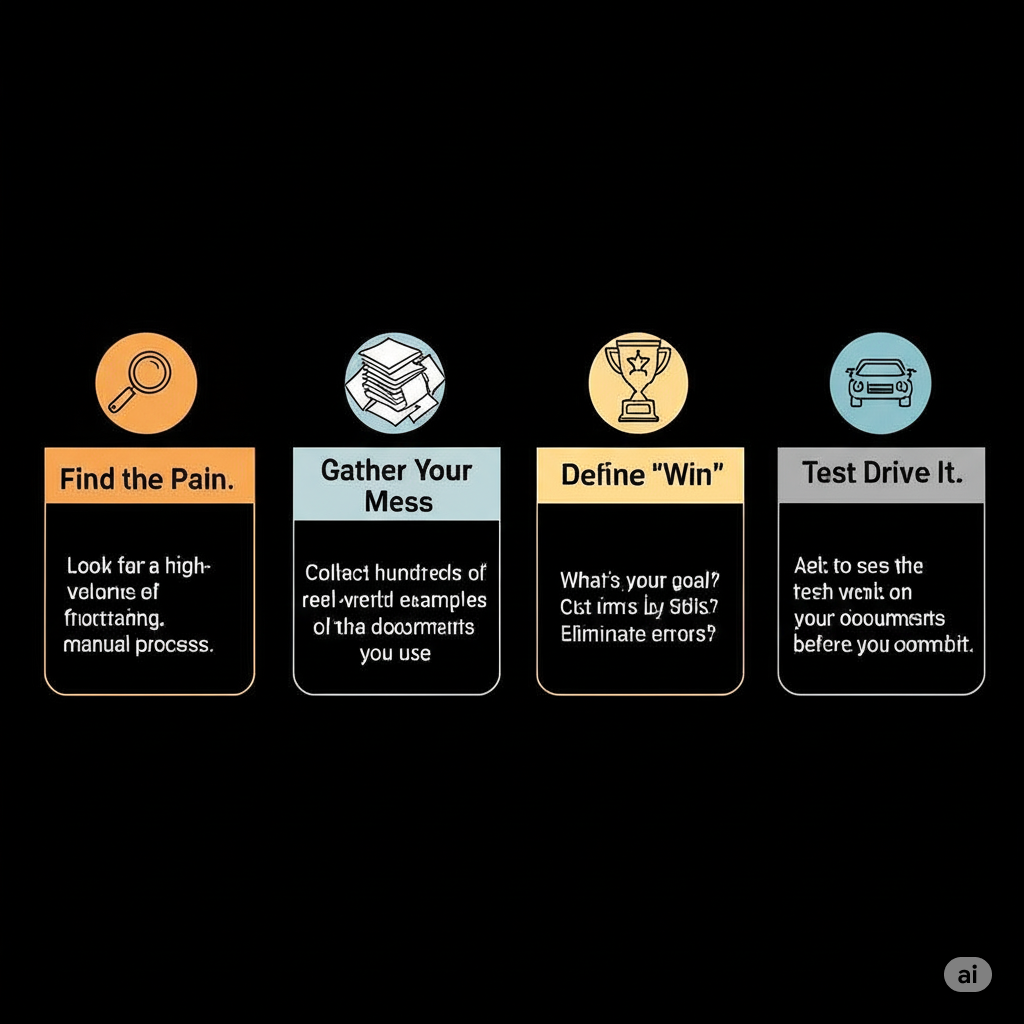
It’s time to be honest about why our old automation projects have stalled. They were built for a perfect world that doesn’t exist. The path forward is to embrace tools that are smart enough to handle the real world in all its messy glory.


